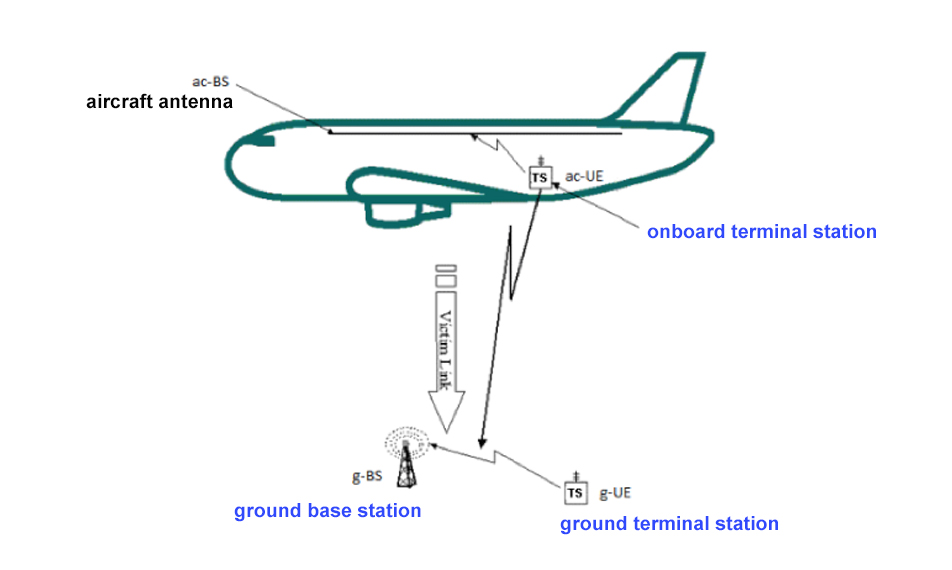ECC Newsletter December 2021
Getting on board with 5G for passengers on aircraft and ships
As the take-up of 5G technology becomes ubiquitous across Europe, the Electronic Communications Committee (ECC) must re-examine regulations for aircraft and ships, writes Peter Faris, Spectrum Expert, European Communications Office
In 2016, ECC developed regulations to allow mobile connectivity on board ships and aircraft, as explored in a newsletter in October of that year.
As mobile technology evolves with the widespread uptake of 5G technology across Europe and globally, so too must these regulations. That evolution will ensure consumers enjoy the same high-speed connectivity while travelling as they experience in other everyday situations.
The growing use of 5G on board ships and aircraft has been facilitated by developments in the satellite sector. They allow for higher-speed, lower-cost backhaul connections to ships and aircraft, as reflected in various updates to the ECC framework for earth stations in motion in recent years.
Review of regulations for mobile communications on board aircraft
In this context, ECC has recently reviewed the existing regulations for mobile communications on board aircraft (MCA) in response to a European Commission Mandate. The result of this work, which was undertaken in ECC PT1, is published in CEPT Report 81. It provides technical conditions to allow 5G connectivity for MCA in the 1800 MHz frequency band. The proposed conditions are limited to 5G systems which do not use active antenna systems (AAS), as it would not be feasible to install AAS base stations on board aircraft.
These technical conditions will now be incorporated in the relevant European Commission regulations. A corresponding update of the ECC framework in ECC Decision (06)07 is also under development and is planned to be finalised in July 2022.
Network Control Unit requirement
The European Commission Mandate also separately tasked the CEPT/ECC with reviewing whether the on-board network control unit is still considered necessary. The network control unit is essentially a legal “jamming” device which is designed to ensure on-board mobile devices do not accidentally attempt to connect to base stations on the ground and thus potentially cause interference to the wider ground network.
Figure 1: Potential for interference from MCA to ground networks
The requirement for this device results in costs for the airline or MCA operator, as well as taking up valuable cabin space and weight on board the aircraft. Additionally, mobile devices are now permitted to be operated on board non-MCA equipped aircraft without a network control unit in accordance with European Union Aviation Safety Agency (EASA) regulations, without any known interference issues. It is therefore worth reviewing if the network control unit is still needed at all.
The analysis in CEPT Report 81 concluded that a network control unit is not necessary to protect 5G networks on the ground, however it may still be necessary to protect legacy Universal Mobile Telecommunications System (UMTS/3G) networks. UMTS networks currently operate in both the 900 MHz and 2 GHz frequency bands. While it is expected that the 2 GHz will be migrated to 4G and 5G networks, in some European countries 3G networks are expected to remain in operation in the 900 MHz frequency band for some time. As a result, CEPT Report 81 concluded that the network control unit is still required for protection of 900 MHz UMTS networks, while the usage in the 2 GHz band may be made optional in the near future. This issue will be further considered in the context of the above-mentioned update of ECC Decision (06)07.
Connectivity on board ships
Shipping is another important transport market in Europe where passengers can benefit from high-speed connectivity, for example, on board cruise ships and passenger ferries.
ECC PT1 is currently undertaking work to update the existing technical conditions in
ECC Decision (08)08 for mobile communications on board vessels (MCV) to allow 5G non-AAS connectivity in the 1800 MHz and 2.6 GHz frequency bands. The recently completed analysis shows that the existing technical and operational constraints which were developed for 4G LTE are also sufficient to ensure the protection of land-based networks from interference from 5G non-AAS on board vessels. This analysis is available in draft ECC Report 336, which is currently undergoing public consultation alongside a corresponding draft revision of the ECC Decision. Both deliverables are planned to be finalised in March 2022.
Benefits to transport sector and passengers
The updated framework for both MCA and MCV will allow airlines and shipping companies to provide a wider range of high-speed on-board applications. They may choose to offer such connectivity as a premium service, thus providing much-needed additional revenue streams for the transport sector in the wake of the COVID-19 pandemic, while also providing passengers with improved options for communications, entertainment and business connectivity while on the move.




